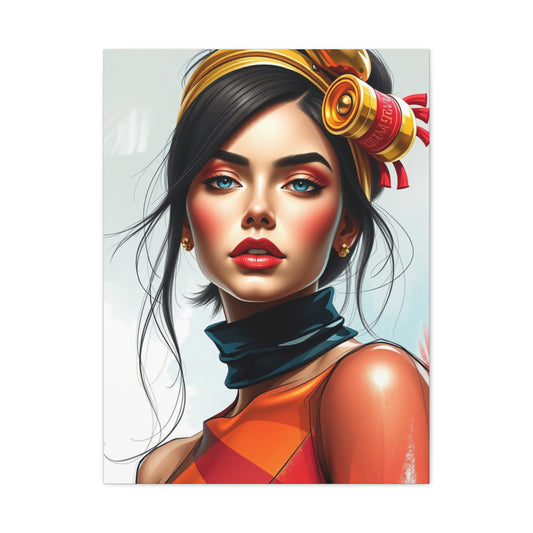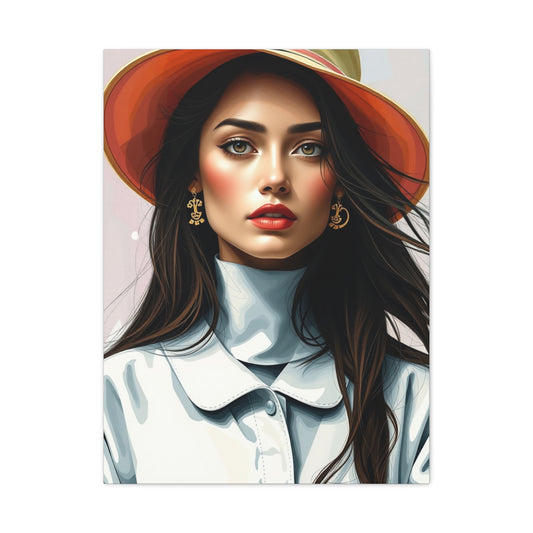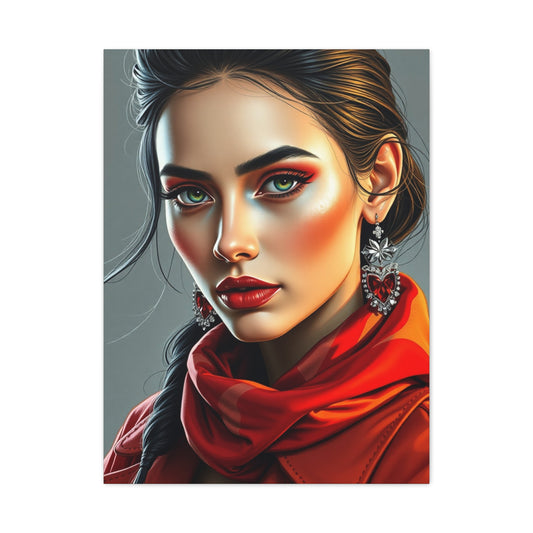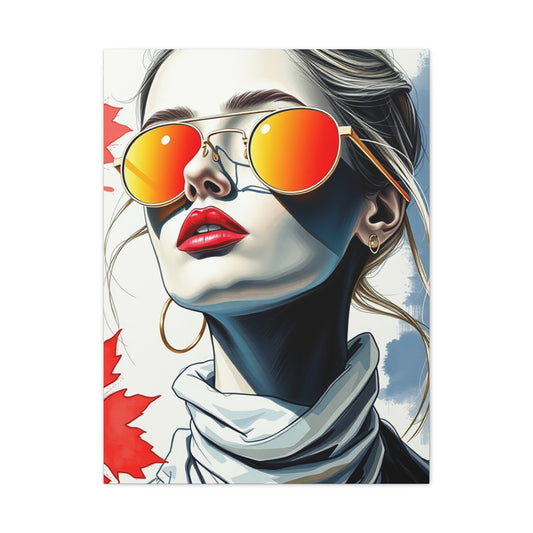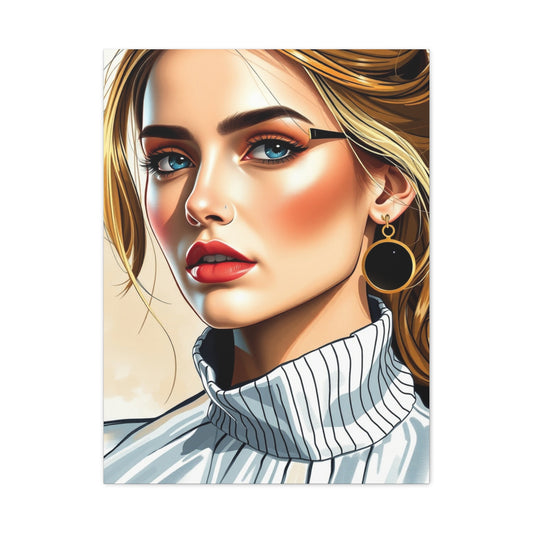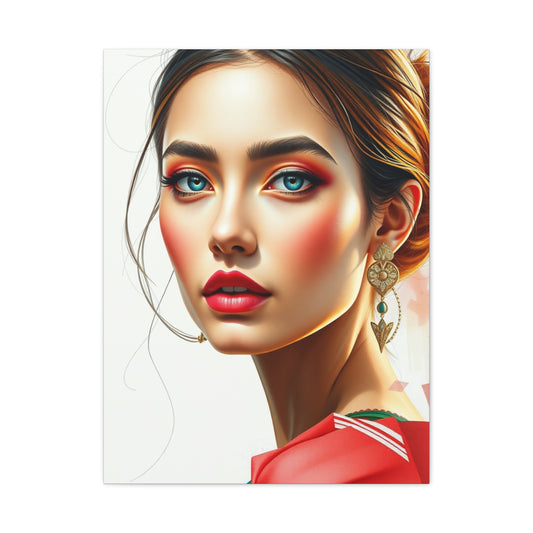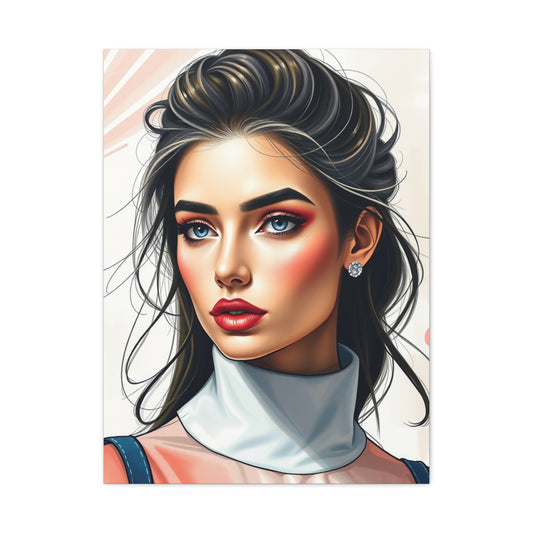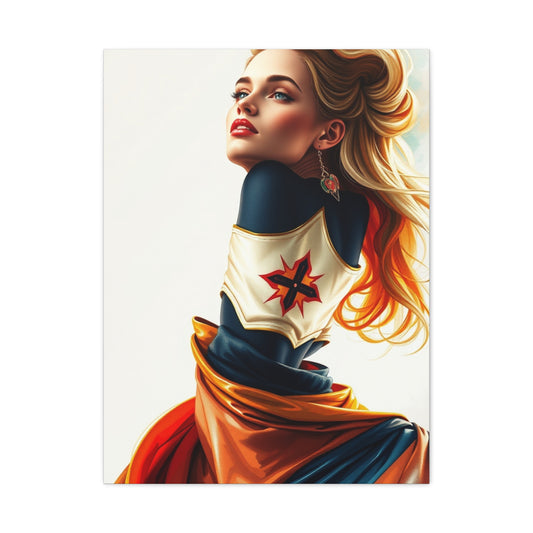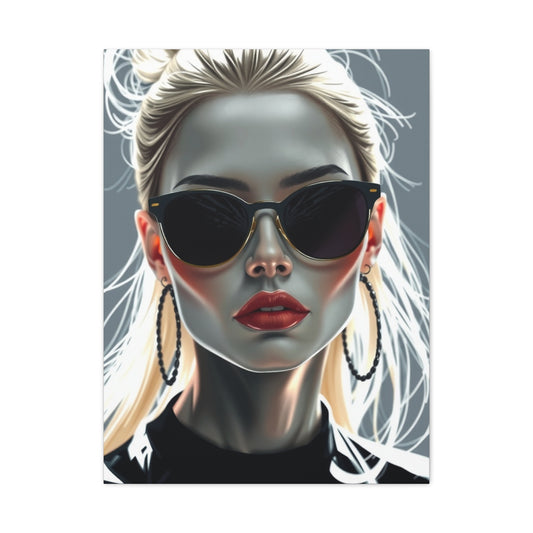Stylish Interiors with Runway Sketch Wall Art and Fashion Illustration Prints
The realm of interior design has witnessed an extraordinary evolution in recent years, with fashion-inspired artwork emerging as one of the most captivating trends in contemporary home décor. Runway sketch wall art represents a sophisticated fusion of haute couture aesthetics and artistic expression, bringing the glamour and elegance of fashion weeks directly into residential and commercial spaces. This comprehensive exploration delves into the multifaceted world of couture illustration prints, examining how fashion figure art has revolutionized modern interior design while providing practical insights for incorporating these exquisite pieces into any environment.
Fashion illustration has transcended its traditional boundaries as mere commercial art, evolving into a legitimate form of artistic expression that captures the essence of style, movement, and elegance. The transformation of fashion sketches from designer studios to gallery walls represents a paradigm shift in how we perceive and appreciate the intersection between fashion and fine art. These elegant sketch canvas pieces embody the ephemeral nature of fashion while providing permanent visual anchors that celebrate the artistry inherent in couture design.
The appeal of runway sketch wall art extends far beyond its aesthetic value, encompassing cultural significance, artistic merit, and emotional resonance. Each piece tells a story of creativity, innovation, and the relentless pursuit of beauty that defines the fashion industry. From the fluid lines that capture the drape of silk to the bold strokes that define architectural silhouettes, these illustrations preserve moments of creative inspiration that might otherwise exist only in the designer's imagination.
The Artistic Evolution of Fashion Illustration
The journey of fashion illustration from commercial necessity to artistic statement reflects broader changes in how society values creativity and self-expression. Historically, fashion sketches served purely functional purposes, providing designers with tools to communicate their visions to pattern makers, manufacturers, and clients. However, the aesthetic quality of these illustrations gradually gained recognition as artists began to appreciate the skill, technique, and artistic vision required to effectively capture the essence of garments and their intended wearers.
Contemporary style illustration wall décor represents the culmination of this evolutionary process, transforming utilitarian sketches into sophisticated art pieces that command attention and admiration. The transition from studio walls to gallery exhibitions has elevated fashion illustration to unprecedented heights, establishing it as a legitimate art form worthy of collection and display. This transformation has been facilitated by advances in printing technology, which allow for museum-quality reproductions that preserve the subtle nuances and delicate details of original sketches.
The democratization of fashion illustration through high-quality prints has made this art form accessible to a broader audience, enabling fashion enthusiasts and design lovers to incorporate elements of haute couture into their living spaces. The availability of designer fashion canvas pieces has created new opportunities for personal expression, allowing individuals to curate collections that reflect their aesthetic preferences and fashion sensibilities.
The cultural impact of fashion illustration extends beyond individual preferences, influencing broader trends in interior design and lifestyle aesthetics. The popularity of runway sketch wall art has contributed to the emergence of fashion-forward interior design philosophies that celebrate creativity, innovation, and artistic expression. This trend has been particularly pronounced in urban environments, where residents seek to create sophisticated, cosmopolitan atmospheres that reflect their appreciation for style and culture.
High-Fashion Art Prints
High-fashion art prints encompass a diverse range of artistic expressions that capture the essence of couture design through various mediums and techniques. These sophisticated pieces go beyond mere representation, incorporating elements of interpretation, stylization, and artistic vision that transform fashion sketches into compelling visual narratives. The complexity of high-fashion art prints lies in their ability to convey not only the physical attributes of garments but also their emotional and cultural significance.
The creation of exceptional high-fashion art prints requires a deep understanding of both fashion design principles and artistic techniques. Artists must possess the technical skills necessary to accurately represent fabric textures, garment construction, and body proportions while maintaining the expressive freedom that distinguishes art from mere documentation. This balance between accuracy and interpretation is what gives high-fashion art prints their unique appeal and enduring value.
The medium selection for high-fashion art prints plays a crucial role in determining the final aesthetic impact and longevity of the piece. Traditional mediums such as watercolor, ink, and charcoal offer distinctive qualities that enhance different aspects of fashion illustration. Watercolor provides transparency and fluidity that perfectly captures the movement and drape of fabrics, while ink drawings offer precision and contrast that emphasize structural details and design elements.
Digital techniques have revolutionized the creation and reproduction of high-fashion art prints, enabling artists to experiment with new effects and enabling widespread distribution of their work. The integration of traditional and digital approaches has resulted in hybrid techniques that combine the authenticity of hand-drawn elements with the versatility and reproducibility of digital media. This evolution has expanded the possibilities for fashion illustration while maintaining the artistic integrity that makes these pieces valuable.
The subject matter of high-fashion art prints extends beyond individual garments to encompass entire fashion narratives, runway presentations, and cultural moments. Some artists focus on capturing the drama and spectacle of fashion shows, while others concentrate on the intimate details of garment construction or the emotional expression of models. This diversity of approaches ensures that high-fashion art prints can appeal to various aesthetic preferences and design philosophies.
Sophisticated World of Chic Runway Wall Canvas
Chic runway wall canvas represents the pinnacle of fashion-inspired interior design, combining the excitement of fashion week presentations with the enduring appeal of fine art. These sophisticated pieces capture the energy, glamour, and creativity that define runway shows, transforming ephemeral moments into permanent celebrations of fashion artistry. The appeal of chic runway wall canvas lies in its ability to transport viewers into the exclusive world of haute couture while serving as striking focal points in contemporary interior spaces.
The creation of exceptional chic runway wall canvas requires artists to possess intimate knowledge of fashion industry dynamics, understanding not only the technical aspects of garment design but also the cultural and commercial forces that shape fashion trends. This comprehensive understanding enables artists to create pieces that resonate with fashion insiders while remaining accessible to general audiences who appreciate beautiful art.
The compositional elements of chic runway wall canvas often incorporate multiple figures, creating dynamic scenes that capture the choreography and movement inherent in fashion presentations. These multi-figure compositions require sophisticated understanding of spatial relationships, perspective, and visual hierarchy to ensure that each element contributes to the overall narrative without overwhelming the viewer. The successful execution of such complex compositions distinguishes exceptional runway canvas pieces from simpler fashion illustrations.
Color palettes in chic runway wall canvas typically reflect seasonal fashion trends while maintaining timeless appeal that ensures long-term relevance in interior design contexts. Artists must balance current fashion colors with classic combinations that provide visual stability and lasting aesthetic value. This careful consideration of color relationships contributes to the investment quality of high-end runway canvas pieces.
The scale and proportion considerations for chic runway wall canvas play crucial roles in determining their impact within interior spaces. Large-scale pieces command attention and serve as dramatic focal points, while smaller works can be grouped to create sophisticated gallery walls that tell comprehensive fashion stories. Understanding these spatial relationships is essential for both artists creating the work and collectors selecting pieces for their spaces.
The technical execution of chic runway wall canvas requires mastery of various artistic techniques, from traditional drawing and painting methods to contemporary digital approaches. The choice of technique influences not only the aesthetic character of the final piece but also its durability and suitability for different display environments. Professional-quality canvas preparation and archival materials ensure that these investment pieces maintain their beauty and value over time.
The Art of Trendsetter Sketch Art in Modern Interior Design
Trendsetter sketch art represents a dynamic category of fashion illustration that captures the cutting-edge creativity and innovative spirit that drive fashion evolution. These pieces focus on groundbreaking designs, experimental silhouettes, and visionary concepts that challenge conventional fashion boundaries. The appeal of trendsetter sketch art lies in its ability to document and celebrate the creative risk-taking that propels fashion forward while providing viewers with glimpses into the future of style.
The identification and interpretation of trendsetting elements require artists to possess deep understanding of fashion history, current market dynamics, and emerging cultural influences. This comprehensive knowledge enables them to recognize which designs and concepts represent genuine innovation rather than mere novelty. The ability to distinguish between trends and lasting innovations is crucial for creating trendsetter sketch art that maintains relevance beyond immediate fashion cycles.
The artistic techniques employed in trendsetter sketch art often reflect the experimental nature of the fashion concepts being portrayed. Artists may employ unconventional materials, innovative drawing techniques, or hybrid approaches that mirror the boundary-pushing creativity of the designers whose work inspires them. This alignment between artistic method and fashion philosophy creates authentic connections between the artwork and its subject matter.
The documentation aspect of trendsetter sketch art contributes to its cultural and historical significance. These pieces serve as visual records of fashion innovation, preserving moments of creative breakthrough that might otherwise be forgotten as trends evolve and change. This archival function adds scholarly and cultural value to trendsetter sketch art, making it appealing to fashion historians, cultural institutions, and serious collectors.
The predictive quality of exceptional trendsetter sketch art enables these pieces to maintain relevance even as fashion cycles progress. Artists who successfully identify and interpret emerging trends create works that continue to resonate with viewers long after their initial creation. This prescient quality distinguishes investment-grade trendsetter sketch art from pieces that merely reflect temporary fashion moments.
The commercial applications of trendsetter sketch art extend beyond residential interior design to include corporate environments, retail spaces, and cultural institutions. Fashion companies, design firms, and creative agencies often incorporate these pieces to communicate their commitment to innovation and creative excellence. This versatility enhances the market value and appeal of high-quality trendsetter sketch art.
Fashion Portrait Wall Prints
Fashion portrait wall prints represent a refined category of fashion illustration that focuses on the human element within fashion presentation. These sophisticated pieces combine portraiture techniques with fashion illustration, creating compelling artworks that celebrate both individual beauty and sartorial elegance. The appeal of fashion portrait wall prints lies in their ability to capture the emotional connection between wearer and garment while showcasing the artistic skill required to render both convincingly.
The technical challenges of fashion portrait wall prints require artists to master multiple disciplines simultaneously. Portrait artists must understand facial anatomy, expression, and character representation, while fashion illustrators need expertise in fabric rendering, garment construction, and style interpretation. The successful combination of these skills results in pieces that excel in both portraiture and fashion illustration, creating unique hybrid artworks.
The psychological impact of fashion portrait wall prints stems from their ability to create emotional connections between viewers and subjects. These pieces often capture moments of confidence, elegance, or contemplation that resonate with viewers on personal levels. The combination of human expression and fashion beauty creates powerful visual narratives that transcend mere decoration to become sources of inspiration and aspiration.
The diversity of approaches within fashion portrait wall prints enables artists to explore various aesthetic philosophies and cultural perspectives. Some artists focus on photorealistic representations that celebrate traditional beauty standards, while others employ more interpretive approaches that challenge conventional notions of fashion and portraiture. This diversity ensures that fashion portrait wall prints can appeal to various collector preferences and interior design philosophies.
The selection of subjects for fashion portrait wall prints often reflects cultural moments, fashion icons, or archetypal representations of style and elegance. Historical figures, contemporary models, and imaginary characters all serve as inspiration for these pieces, providing artists with rich source material for creative interpretation. The choice of subject significantly influences the cultural resonance and market appeal of the finished artwork.
The collaborative aspects of fashion portrait wall prints sometimes involve partnerships between portrait artists and fashion illustrators, combining their respective expertise to create exceptional pieces. These collaborations can result in artworks that exceed the capabilities of individual artists while maintaining coherent artistic visions. The success of such partnerships depends on shared aesthetic sensibilities and complementary technical skills.
The Minimalist Appeal of Minimal Fashion Drawings
Minimal fashion drawings represent a sophisticated approach to fashion illustration that emphasizes essential elements while eliminating unnecessary details. This reductive aesthetic philosophy creates powerful artworks that capture the essence of fashion design through careful selection and emphasis of key visual elements. The appeal of minimal fashion drawings lies in their ability to communicate complex fashion concepts through elegant simplicity that resonates with contemporary interior design trends.
The philosophical foundations of minimal fashion drawings draw from broader minimalist art movements that celebrate restraint, precision, and intentionality. Artists working in this style must possess exceptional skills in composition and line quality, as every mark carries significant visual weight in the absence of supporting details. This demand for technical excellence makes exceptional minimal fashion drawings particularly valuable and collectible.
The creative process for minimal fashion drawings requires extensive planning and conceptual development before any marks are made on the canvas or paper. Artists must identify the essential characteristics that define each garment or fashion concept, then develop approaches for representing these elements with maximum impact and minimum visual complexity. This intellectual rigor distinguishes minimal fashion drawings from simple sketches or unfinished works.
The contemporary relevance of minimal fashion drawings aligns with current interior design trends that favor clean lines, uncluttered spaces, and sophisticated simplicity. These pieces integrate seamlessly into modern residential and commercial environments while providing visual interest without overwhelming existing design elements. Their versatility makes them particularly appealing to design professionals and style-conscious individuals.
The technical execution of exceptional minimal fashion drawings often employs traditional mediums such as ink, charcoal, or graphite to achieve the precision and clarity that define this aesthetic approach. The choice of medium significantly influences the character and impact of the final piece, with each option offering distinct advantages for specific design concepts and interior applications.
The market positioning of minimal fashion drawings reflects their appeal to sophisticated collectors who appreciate both fashion and contemporary art. These pieces often command premium prices due to their technical difficulty, aesthetic sophistication, and alignment with current design trends. Investment potential is enhanced by the growing appreciation for minimalist art across various collecting categories.
Considerations for Elegant Sketch Canvas
The production of elegant sketch canvas requires careful attention to technical specifications that ensure both aesthetic quality and longevity. Understanding these technical considerations is essential for artists, collectors, and interior designers who want to maximize the impact and durability of fashion illustration artworks. The complexity of canvas production encompasses material selection, printing technologies, finishing techniques, and preservation methods that collectively determine the final quality of the piece.
Canvas substrate selection forms the foundation of elegant sketch canvas production, with different materials offering distinct advantages for various artistic styles and display environments. Cotton canvas provides traditional texture and absorption characteristics that enhance the appearance of certain illustration styles, while synthetic substrates offer superior dimensional stability and resistance to environmental factors. The choice of substrate significantly influences both the aesthetic character and practical performance of the finished piece.
Printing technologies for elegant sketch canvas have evolved dramatically in recent years, enabling reproduction quality that rivals original artworks in many cases. Digital printing systems now offer color accuracy, resolution, and archival stability that make high-quality reproductions practical for both limited edition and broader market applications. Understanding the capabilities and limitations of different printing technologies helps ensure optimal results for specific illustration styles and intended applications.
Color management throughout the production process requires sophisticated understanding of color theory, digital workflows, and printing characteristics. Accurate color reproduction is particularly challenging for fashion illustrations, which often feature subtle color relationships and specific brand colors that must be maintained across different viewing conditions. Professional color management systems and calibrated workflows are essential for achieving consistent, accurate results.
Finishing techniques for elegant sketch canvas include various options for surface treatments, protective coatings, and mounting systems that enhance both appearance and durability. These finishing choices significantly influence the final aesthetic character of the piece while providing practical benefits such as UV protection, moisture resistance, and dimensional stability. The selection of appropriate finishing techniques requires consideration of both artistic intent and display environment requirements.
Quality control procedures for elegant sketch canvas production involve multiple inspection points throughout the manufacturing process to ensure consistent results that meet professional standards. These procedures encompass substrate inspection, color verification, print quality assessment, and final finishing evaluation. Rigorous quality control is essential for maintaining the reputation and value of premium fashion illustration prints.
Fashion Illustration Art
The successful integration of fashion illustration art into interior design requires sophisticated understanding of spatial relationships, color coordination, and style compatibility. These artworks can serve various functions within interior spaces, from dramatic focal points to subtle accent pieces that enhance existing design themes. Effective integration strategies consider both the immediate visual impact and long-term aesthetic evolution of the space.
Scale considerations play crucial roles in determining the effectiveness of fashion illustration art within interior environments. Large-scale pieces demand significant wall space and strong visual commitment but can transform entire rooms through their commanding presence. Smaller pieces offer greater flexibility for arrangement and style evolution while requiring careful consideration of viewing distances and surrounding elements to maintain visual impact.
Color relationships between fashion illustration art and existing interior elements require careful planning to achieve harmonious results. Fashion illustrations often feature bold colors and strong contrasts that can either enhance or conflict with established color schemes. Understanding color theory and practical color coordination enables designers to select pieces that support overall design goals while providing appropriate visual interest.
Lighting design for fashion illustration art significantly influences its visual impact and long-term preservation. These pieces often feature subtle details and color relationships that require appropriate illumination to be fully appreciated. The selection and positioning of lighting systems must balance aesthetic enhancement with conservation requirements to ensure long-term artwork preservation.
Grouping and arrangement strategies for multiple fashion illustration pieces enable the creation of cohesive collections that tell comprehensive design stories. Gallery walls, salon-style arrangements, and thematic groupings all offer different approaches for displaying multiple pieces effectively. The success of these arrangements depends on understanding visual relationships, scale proportions, and narrative development across multiple artworks.
Style compatibility considerations ensure that fashion illustration art enhances rather than conflicts with existing interior design themes. These artworks can complement various design philosophies, from contemporary minimalism to traditional elegance, when selected and positioned appropriately. Understanding style relationships enables designers to incorporate fashion illustration art authentically within diverse design contexts.
Significance of Fashion Wall Art
Fashion wall art represents more than mere decoration; it embodies cultural values, aesthetic preferences, and social aspirations that reflect broader societal trends and individual identity expression. The growing popularity of fashion-inspired artwork indicates evolving relationships between fashion, art, and personal space that demonstrate increased appreciation for style as a form of cultural expression.
The democratization of fashion appreciation through wall art enables broader audiences to engage with haute couture concepts and design excellence previously accessible only to industry insiders. This accessibility has contributed to increased fashion literacy and appreciation among general audiences while expanding the market for fashion-related cultural products. The educational value of well-executed fashion wall art should not be underestimated in its ability to communicate design principles and aesthetic concepts.
Gender considerations in fashion wall art reflect evolving attitudes toward style, beauty, and personal expression across different demographic groups. While fashion illustration has traditionally appealed primarily to female audiences, contemporary approaches increasingly attract diverse collectors who appreciate the artistic merit and cultural significance of these pieces regardless of traditional fashion interest patterns.
Generational differences in fashion wall art appreciation reveal changing values and aesthetic preferences across age groups. Younger collectors often gravitate toward contemporary styles and digital techniques, while older collectors may prefer traditional approaches and classical fashion themes. Understanding these generational preferences helps artists and galleries develop appropriate marketing and exhibition strategies.
Geographic variations in fashion wall art popularity reflect regional differences in fashion culture, economic conditions, and aesthetic preferences. Urban markets typically demonstrate stronger demand for fashion-inspired artwork, while rural areas may show more limited interest. International variations reveal cultural differences in fashion appreciation and art collecting patterns that influence global market dynamics.
The investment potential of fashion wall art has grown significantly as the category gains recognition within broader art markets. High-quality pieces by established artists increasingly attract serious collectors who recognize both aesthetic value and financial appreciation potential. This investment interest has contributed to market development and increased production quality across the category.
Collecting and Curating Fashion Illustration Artwork
The collecting and curation of fashion illustration artwork requires sophisticated understanding of artistic merit, market dynamics, and preservation requirements. Successful collectors develop expertise that enables them to identify exceptional pieces, build cohesive collections, and maintain their investments effectively. The complexity of fashion illustration collecting encompasses technical, aesthetic, and practical considerations that influence long-term satisfaction and value.
Artist research forms the foundation of informed fashion illustration collecting, requiring investigation into artistic backgrounds, technical capabilities, and market recognition. Understanding artist development patterns helps collectors identify emerging talents while established artists provide more predictable value appreciation. The balance between discovery and security influences collection development strategies and risk tolerance levels.
Authentication and provenance verification present unique challenges in fashion illustration collecting, particularly for pieces that may exist in multiple editions or formats. Understanding production methods, documentation requirements, and market practices helps collectors avoid problematic acquisitions while ensuring long-term value protection. Professional authentication services provide valuable assistance for significant acquisitions.
Condition assessment for fashion illustration artwork requires understanding of medium-specific deterioration patterns and conservation requirements. Different materials and production methods present distinct preservation challenges that influence both acquisition decisions and long-term care strategies. Regular condition monitoring and preventive conservation measures protect collection value and ensure continued enjoyment.
Storage and display considerations for fashion illustration collections encompass environmental controls, handling procedures, and rotation strategies that balance accessibility with preservation requirements. Professional storage solutions provide optimal protection for pieces not currently on display while enabling easy access for viewing and lending. Display systems must accommodate varying sizes and formats while providing appropriate protection.
Insurance and documentation requirements for fashion illustration collections include appraisal procedures, coverage evaluations, and loss prevention strategies. Professional appraisals establish accurate values for insurance purposes while documentation systems track provenance, condition changes, and market developments. Comprehensive insurance coverage protects against various risks while enabling confident collecting and display.
Conservation and Preservation of Fashion Art Prints
The conservation and preservation of fashion art prints require specialized knowledge of material characteristics, deterioration mechanisms, and treatment options specific to these artworks. Understanding preservation principles enables collectors and institutions to maintain their fashion illustration investments while ensuring continued accessibility for future generations. The complexity of conservation encompasses preventive measures, environmental controls, and interventive treatments when necessary.
Material analysis for fashion art prints involves identification of substrates, media, and production methods that influence deterioration patterns and treatment options. Different materials present distinct preservation challenges that require specific conservation approaches. Understanding material characteristics enables appropriate care decisions and long-term preservation planning.
Environmental control systems for fashion art print preservation encompass temperature, humidity, light, and air quality management that prevents or slows deterioration processes. These systems require ongoing monitoring and adjustment to maintain optimal conditions while accommodating display and access requirements. Professional environmental control systems provide the precision and reliability necessary for valuable collections.
Handling procedures for fashion art prints minimize physical stress and contamination that can cause immediate or cumulative damage. Proper handling techniques, protective equipment, and storage systems reduce risks associated with routine collection management activities. Training and consistent procedures ensure that all collection interactions maintain preservation standards.
Documentation systems for fashion art print conservation track condition changes, treatment histories, and preservation activities that inform future care decisions. Comprehensive documentation enables preservation planning, treatment evaluation, and research applications while supporting insurance and loan requirements. Digital documentation systems provide accessible, searchable records that enhance collection management efficiency.
Emergency preparedness for fashion art print collections includes disaster planning, emergency response procedures, and recovery strategies that minimize losses during unexpected events. These preparations encompass risk assessment, prevention measures, and response protocols that protect collections while ensuring human safety. Regular planning updates maintain effectiveness as collections and circumstances evolve.
Minimalist and sketch-style illustrations
Digital technologies have revolutionized both the creation and distribution of fashion illustration artwork while opening new possibilities for artistic expression and market development. Understanding current technologies and future trends enables artists, collectors, and industry professionals to anticipate changes and adapt strategies accordingly. The digital transformation encompasses creation tools, distribution methods, and presentation technologies that continue to evolve rapidly.
Digital creation tools for fashion illustration artwork include sophisticated software applications, digital drawing devices, and hybrid workflows that combine traditional and digital techniques. These tools enable new forms of artistic expression while improving efficiency and reproducibility. Understanding digital capabilities helps artists select appropriate tools while enabling collectors to appreciate technical innovation in contemporary works.
Online marketplace development for fashion illustration artwork has expanded access to both artists and collectors while enabling global market participation. Digital platforms provide unprecedented reach and efficiency for art transactions while requiring new approaches to quality verification and customer service. Understanding online marketplace dynamics helps both buyers and sellers navigate digital art commerce effectively.
Virtual and augmented reality applications for fashion illustration artwork encompass immersive viewing experiences, virtual gallery presentations, and interactive art installations that transform traditional presentation methods. These technologies provide new ways for audiences to engage with fashion illustration while creating opportunities for innovative artistic expression.
Blockchain and cryptocurrency applications in fashion illustration artwork markets include authentication systems, ownership verification, and alternative payment methods that address traditional market challenges. While still developing, these technologies offer potential solutions for provenance tracking and transaction security that could significantly impact art market operations.
Artificial intelligence applications in fashion illustration artwork creation encompass automated drawing systems, style analysis tools, and collaborative creation platforms that augment human artistic capabilities. Understanding AI developments helps artists adapt their practices while enabling collectors to appreciate the evolving relationship between human creativity and technological assistance.
Conclusion
The world of runway sketch wall art and fashion illustration prints represents a fascinating convergence of artistic expression, cultural significance, and interior design innovation that continues to evolve and expand its influence across multiple domains. Throughout this comprehensive exploration, we have examined the multifaceted nature of couture illustration prints, from their historical origins as functional design tools to their current status as sophisticated collectible artworks that command attention in both residential and commercial environments.
The transformation of fashion figure art from studio necessity to gallery-worthy pieces reflects broader changes in how society values creativity, craftsmanship, and aesthetic expression. The elegant sketch canvas works we have discussed demonstrate the remarkable skill and vision required to capture not just the physical characteristics of garments but their emotional resonance and cultural significance. These pieces serve as bridges between the exclusive world of haute couture and the accessible realm of interior design, enabling fashion enthusiasts to incorporate elements of runway glamour into their daily lives.
The technical aspects of creating and preserving high-fashion art prints reveal the complexity and sophistication that underlie these apparently simple illustrations. From the selection of appropriate substrates and printing technologies to the implementation of conservation strategies that ensure long-term preservation, every aspect of production and care requires specialized knowledge and attention to detail. This technical foundation supports the artistic vision while ensuring that these investments maintain their beauty and value over time.
The diverse categories within fashion illustration artwork, from chic runway wall canvas to minimal fashion drawings, demonstrate the versatility and range of this art form. Each approach offers unique aesthetic qualities and appeals to different collector preferences while contributing to the overall richness and diversity of the field. The continued evolution of artistic techniques and approaches ensures that fashion illustration remains dynamic and relevant to contemporary audiences.
The commercial applications and professional uses of fashion illustration artwork extend far beyond personal collecting and residential decoration. The integration of these pieces into corporate environments, retail spaces, hospitality venues, and educational institutions demonstrates their versatility and cultural relevance while creating new markets and opportunities for artists and collectors alike. These professional applications often demand higher quality standards and more sophisticated selection criteria, driving overall market development and artistic excellence.
The digital transformation of fashion illustration creation and distribution has opened new possibilities for artistic expression while making these works more accessible to global audiences. The development of online marketplaces, virtual viewing technologies, and digital creation tools has democratized both the creation and collection of fashion illustration artwork while maintaining the essential human creativity and aesthetic judgment that define exceptional pieces.
Market dynamics within the fashion illustration artwork sector reflect growing recognition of these pieces as legitimate collectible investments worthy of serious consideration alongside traditional art categories. The development of professional support services, including authentication, conservation, and appraisal capabilities, has enhanced market confidence while providing collectors with the resources necessary for informed decision-making and long-term success.
The cultural impact and significance of fashion wall art extends beyond mere aesthetic appreciation to encompass broader themes of identity expression, cultural communication, and artistic accessibility. These pieces serve as conduits for fashion appreciation and education while contributing to the cultural dialogue surrounding style, beauty, and artistic expression in contemporary society.
Conservation and preservation considerations for fashion art prints reveal the importance of professional care and environmental management in maintaining these investments. Understanding material characteristics, deterioration mechanisms, and preservation strategies enables collectors and institutions to protect their acquisitions while ensuring continued accessibility for future generations of enthusiasts and scholars.
The future developments anticipated in digital technologies, market structures, and artistic approaches suggest that fashion illustration artwork will continue to evolve and expand its influence in coming years. The integration of emerging technologies with traditional artistic skills promises new forms of creative expression while maintaining the essential human elements that make these pieces compelling and valuable.
Looking forward, the continued growth and development of the fashion illustration artwork market appears assured, supported by strong cultural trends toward style appreciation, artistic collecting, and sophisticated interior design. The increasing recognition of these pieces as legitimate art investments, combined with growing appreciation for fashion as a cultural force, suggests that runway sketch wall art and related categories will continue to attract new collectors and command increasing respect within broader art markets.
The educational and inspirational value of fashion illustration artwork should not be overlooked in considering its broader significance. These pieces serve as windows into the creative process of fashion design while providing accessible entry points for individuals seeking to develop their aesthetic appreciation and understanding of style principles. The combination of artistic merit and cultural relevance makes fashion illustration artwork particularly valuable for educational institutions and cultural organizations seeking to engage diverse audiences with fashion and design concepts.
For individuals considering entering the fashion illustration artwork market, whether as artists, collectors, or design professionals, the comprehensive understanding developed through this exploration provides a solid foundation for informed decision-making and successful participation. The complexity and sophistication of this field reward careful study and thoughtful engagement while offering substantial opportunities for personal satisfaction and potential financial appreciation.

